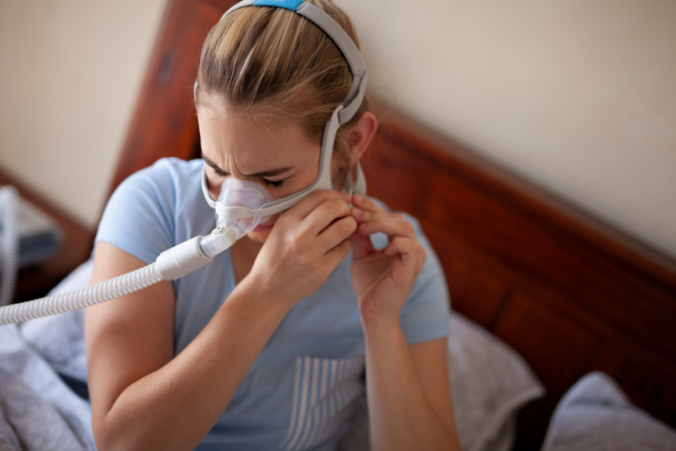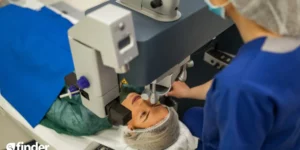The use of CPAP masks has been an effective remedy to overcome the challenges of Obstructive Sleep Apnea (OSA) in many people. However, CPAP therapy comes with peculiar challenges due to the preconceived notions that people often have about this procedure. It is, therefore, necessary to address these common myths and debunk them as soon as possible with proven facts.
Several CPAP mask categories range from smaller nasal pillows that allow you to wear glasses to sophisticated face CPAP masks that cover your mouth and nose. To have a successful CPAP therapy, one must understand how these nasal masks work and how to get the best CPAP mask. This article will help to buy CPAP mask online.

The right CPAP mask manages the air pressure to overcome obstructive sleep apnea disorder. How it does, is to keep your airways open during sleep whether you breathe with the nose or are a mouth breather. In addition, the nasal mask has a nasal cradle cushion to support the impact on your face.
This article focuses on some of the preconceived notions about sleep disorders that the use of CPAP masks can manage. Anyone choosing these CPAP masks, including the nasal pillow mask, must understand the facts and discard the myths about them.
Myth 1: CPAP machines are too big and often loud

The earliest CPA machine created came in massive sizes, starting with the 1980 edition. But that is not strange about technological inventions such as computers, mobile phones, TV sets, storage devices, etc. Each of these nasal masks and sleep apnea gears was huge initially but later grew smaller as the technology advanced.
Similarly, CPAP masks have evolved into smaller, sleek, and compact portable devices. Today, you can confidently put sleep apnea masks by your bedside and stretch the nasal mask to the bed. Also, the nasal mask can be instrumental to the progress of your CPAP therapy. These sleep apnea masks have also had their share of technological improvements on their overall components and application. As a result, we now have smaller but more efficient tools to combat sleep apnea.
The CPAP mask within the machine also has an automatic air pressure control and Bluetooth feature that allows the clinician to monitor the progress of your health therapy. At the same time, a modern heart treatment device machine can synchronize with mobile apps, enabling you to check your sleeping performance over time.
The modern CPAP machine with its face mask and mouth breathers does not make any noise. The sound level is usually around 26 lbs, provided that the machine is in good condition. It indicates that the CPAP mask is faulty if it makes more noise. In addition, CPAP has humidifiers with a weight of about 2.75 lbs.
Myth 2: CPAP Masks look awkward and leaks

There is a common misconception about CPAP masks, comparing them to snorkel gear or Darth Vader. Both comparisons are far from the truth and are just bad representations. A wide variety of CPAP mask designs have features for maximum patient comfort. Below are some of the components that are common to modern CPAP machines.
- A nasal mask that has a minimum facial contact
- A hose attachment at the top of the head allows the patient to move freely while asleep
- Double straps with which you can take off or put on with ease
- The material of the belt also favors patients who would like to keep their hair from pulling when wearing the CPAP mask
- It also has a line sight to make vision easy for patients who will want to read or wear eyeglasses
In terms of a possible leak, CPAP masks should not leak under ideal conditions, but if it does, there are a couple of reason why it may happen
- The CPAP mask seal may not be adequately fit in place; you may need to check it
- The seal may no longer be effective in covering the airway. You should order a replacement
- You have not adjusted the headgear to the appropriate position
Myth 3: CPAP mask is difficult to use when traveling
Suppose you are thinking of moving your CPAP therapy device therapy along with you on the journey. In that case, it is not impossible, although it may depend on the size. We often recommend using a regular home CPAP therapy machine or a travel-size CPAP mask for your journey. The same applies if you go camping off-grid and need an additional power source, such as external batteries.
Meanwhile, if you are worried about carrying such weight on your flight, there is good news. Your CPAP machine is considered a piece of medical equipment during the check-in and, therefore, cannot count as additional luggage for a flight. More importantly, you must keep your prescription in place to provide it for clearance.
Regarding remote management, most modern CPAP machines with CPAP masks come with Bluetooth technology. The clinician can use this setting to control the machine from a nearby mobile phone within the stated radius.
Myth 4: You don’t always need Distilled water in your CPAP machine
It is a big lie. Instead, only use distilled water in the CPAP machine to protect your CPAP machine and keep you safe with the equipment. For instance, distilled water must have undergone the boiling process that kills microbes and removes the water’s chemicals and minerals. Some of these minerals, including iron, calcium, and magnesium salts, are responsible for the hardness of the water.
However, filtering does not only remove tiny organisms, but it can remove some minerals and particles. For example, suppose you use hard water inside your CPAP machine. In that case, the content minerals got inside the humidifier’s water chamber and deposited over time. After a while, it would cause scaling inside the component and generate a container decoration. This process may spoil your CPAP machine.
Myth 5: A CPAP mask can cause skin irritation
Some patients have reported that CPAP masks caused them some irritation on the skin due to the presence of silicone. Anyone who hears silicone may not dispute it. Still, these CPAP masks are often made from a medical-grade level of silicone that can barely cause body irritation. Taking it further, the actual culprit of most reported disturbances is the bacteria present in the CPAP mask.
However, the silicone inside the inner layer of the CPAP mask cushion wears off from the skin oils after some time. This change creates microscopic pockets within the internal surface of the pillow and may harbor some bacteria. Therefore, you should make it a habit always to wash the CPAP mask to reduce any chance of irritation. In addition, you may want to replace the mask after using it for 6 to 12 months. It may also be subject to the reduced ability of the silicone to be cleaned.
If your CPAP mask components are not well fit, it may lead to itching on that body surface. For instance, if you overtighten the headgear, it may lead to causing pressure points with red marks and wear and tear to the skin. Consult your clinician if you feel uneasy about any part of your face when using the CPAP masks.
Conclusion
Finally, the five common myths above have held sway simply because we have not attempted to debunk them so far. So now you have it: the five facts disprove the common myths about using CPAP masks and how to combat them safely.










